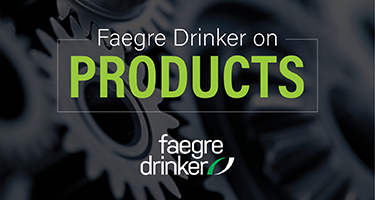As the COVID-19 pandemic continues to alter ways of life across the globe, clinical trials must be adapted for participant safety while maintaining accuracy in the midst of the ongoing crisis. In September 2020, the U.S. Food and Drug Administration (FDA) updated its “Guidance on Conduct of Clinical Trials of Medical Products During COVID-19 Public Health Emergency,” providing specific recommendations for ongoing or upcoming clinic trial activities.
District Court Requires Plaintiff to Disclose Evidence About Noneconomic Loss
When plaintiffs request damages for noneconomic loss such as pain and suffering, courts are split on whether a defendant can require a plaintiff to disclose during discovery how much the plaintiff intends to ask the jury to award in noneconomic damages. A recent decision from a federal district court in Minnesota, however, required the plaintiff to do just that.
In Lewis v. City of Burnsville, 2020 WL 3496990 (D. Minn. June 29, 2020), the defendants asked the plaintiff during discovery to itemize the damages that she was seeking and “produce documentary support for her damages claim.” The plaintiff declined to provide this information, arguing that it was impossible to calculate her noneconomic loss. The magistrate judge, however, ruled that the plaintiff had to disclose how much she was seeking in noneconomic damages “along with the basis for that figure,” if the plaintiff intended to ask the jury for a specific dollar amount (or range) of noneconomic damages at trial.
Continue reading “District Court Requires Plaintiff to Disclose Evidence About Noneconomic Loss”
PREP Act Does Not Require Federal Forum for State Law Negligence Claims Related to COVID-19
A New Jersey District Court Judge has ruled that the March 2020 federal liability immunity statute for pandemic-related countermeasures does not create a basis for federal jurisdiction, resulting in the remand of two COVID-19-related personal injury actions.
Maryland Adopts Daubert Standard for Admissibility of Expert Testimony
The Maryland Court of Appeals has retired the inflexible Frye-Reed standard and adopted the framework of Daubert for evaluating the admissibility of expert testimony. In Rochkind v. Stevenson (August 28, 2020), Maryland officially joined the supermajority of states that have considered the issue and now follow Daubert.
Continue reading “Maryland Adopts Daubert Standard for Admissibility of Expert Testimony”
A Litigator’s Guide to the 2020 New Jersey Rule Amendments
The New Jersey Court Rules were amended in July 2020, effective September 1, 2020. A number of these amendments are important for litigators, and this post provides a summary.
New Jersey Court Rules Governing Motion Practice
Rule 4:6-2: Motions to Dismiss for Failure to State a Claim
Rule 4:6-2 (“How Presented”) governs assertion of defenses. The amendments target the Rule’s provisions governing motions to dismiss for failure to state a claim upon which relief may be granted. Previously, motions to dismiss were calendared on New Jersey’s typical 16-day cycle for motions, with motion papers required to be filed at least 16 days prior to the motion’s return date. The amended Rule now requires such motion papers to be served in accordance with Rule 4:46-1 – New Jersey’s Rule governing summary judgment motions.
Continue reading “A Litigator’s Guide to the 2020 New Jersey Rule Amendments”
Plaintiff’s Firm Pays the Price for Dismissing Bellwether Cases
On August 25, 2020, Judge Richard L. Young, S.D. Indiana, granted Cook Medical Inc.’s motion for sanctions against the plaintiff’s law firm in Burrage v. Cook Medical Inc. et al.
This case was one of many “no-injury” claims in the Cook IVC Filter MDL, meaning that the plaintiff did not claim any symptomatic injuries related to his IVC filter. It was selected as a bellwether case in August 2019 following a selection process that required substantial time and effort from the parties and the court. In June 2020, plaintiff’s counsel moved to voluntarily dismiss his claims with prejudice on the grounds that they have a “negative value” (meaning that the costs of litigating the case exceed the anticipated recovery), and Burrage never anticipated that the case would go to trial.
Continue reading “Plaintiff’s Firm Pays the Price for Dismissing Bellwether Cases”

